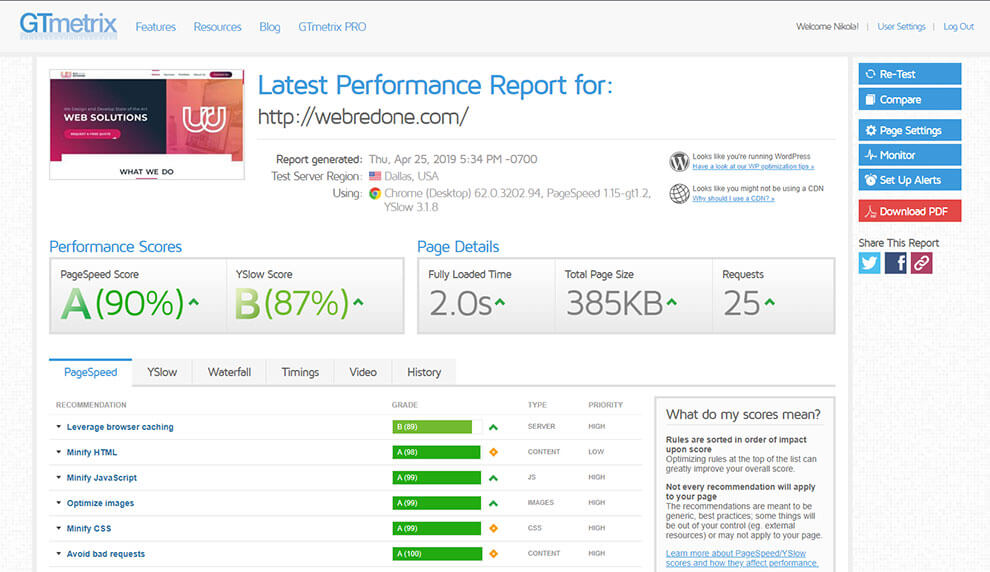Website Load Time Optimization can “make or break” your online business.
A few seconds determine if your website visitor will continue browsing your website or will leave it asap.
So, having that said, website loading time speed is essential. It hurts users and search engines.
Website load time statistics from numerous studies show that if the load time exceeds 3 seconds, the abandonment rates soar.
High abandonment rates then affect bounce rates which signal to search engines that your website is not useful to visitors. That, in the end, affects the ranking of your website (and will make SEO optimization harder to achieve).
If you are an e-commerce website owner, then load time optimization should be one of the most prioritized aspects of improving your website in order not to lose your new customers, or even lose your existing ones.
A few facts about how website loading time affects your website:
- 1-3 seconds of load time increases the website bounce rate probability by 32%
- 4-5 seconds of load time increases website bounce rate probability by 90%
- 6 seconds of load time increases the website bounce rate probability by 106%
- 1-10 seconds load time increases website bounce rate probability by 123%
- 53% of web surfers leave pages that take longer than 3 seconds to load.
- 79% of online shoppers state that any performance hiccup will make them stay away from an online store.
- 39% of people will leave a website if images take too long to load or don’t load at all
- $18 billion per year is the total cost of abandoned shopping carts for e-commerce business owners
- A 1s delay decreases customer satisfaction by 16%
- AliExpress reduced load time for its website pages by 36% and recorded a 10.5% increase in orders and a 27% increase in conversions for new customers.
These were just a few facts to make a point that load time optimization is crucial before launching a website.
So, the optimal load time for your website should be 1 – 3s.
You can measure your website load time on tools such as GT Metrix, Google page insights, and tools.pingdom.com.

Some of the key factors that negatively impact your website loading speed.
- Oversized images and non-optimized: Images that are too wide (we’ve seen examples of people using images that are 6000px wide on their websites.
A large and non-optimized image means that it will take for example 4MB which is way too much for a website page (Which should ideally be less than 1MB). - Too many <script> and <style> tags. If you are using a CMS to run your website, WordPress for example, you may have added too many plugins that generate these files and slow down your website.
- Non-minified javascript and CSS files
- Placement of <script> and <style> tags (files): You should ideally place scripts at the bottom of your page’s HTML code so that HTML and CSS (Structure and looks of your website) first load.
If scripts are placed at the beginning of your page, they may block the rendering the page. - Poorly configured servers: This refers to tech concepts like website caching, GZIP compression, etc.
WebRedone’s take on website load time optimization.
We take this aspect of website design and development seriously and start considering and implementing it even it the initial design phase. For example Not too many images per page, server optimization from the start, etc.
That’s the case for all our projects, be it static websites, WordPress Content Management System (CMS), or Woocommerce e-commerce website.
When we speak about WordPress/Woocommerce, this is why we don’t work with premium themes but instead develop from scratch.
Check out our open-source WordPress starter theme
It supports React, Vue and Svelte, includes a framework for creating custom Gutenberg blocks, and so much more. You will love it.

